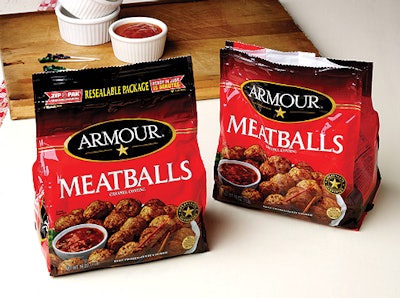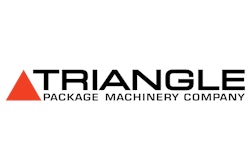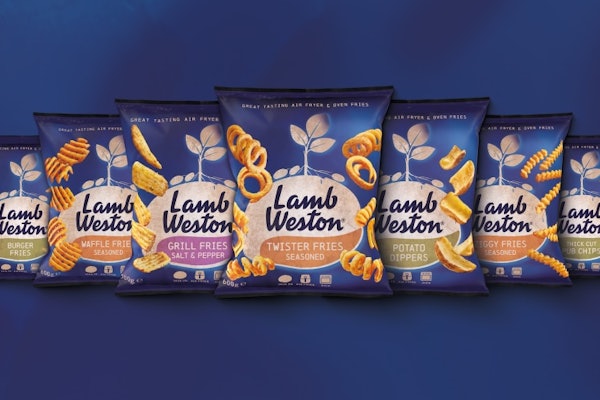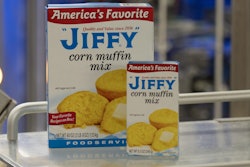Two new vertical form/fill/seal systems at ConAgra Foods’ Hastings, NE, plant bring unusual flexibility to the way the firm packages IQF meatballs and chicken tenders. Since the new equipment was installed about six months ago, ConAgra can now produce either pillow-style packages or a four-corner-sealed stand-up bag with a reclosable zipper feature. Perhaps best of all, changeover from one bag style to the other is minimal.
Both bagging systems consist of three key components. At the top is a 14-bucket radial combination weigher. This unit feeds a four-corner-seal vf/f/s system that is equipped with a transverse zipper applicator.
To ensure fast changeover from pillow-style to stand-up bags, the machine designers included touch screen access to a PLC so that operators can easily scroll through a menu of preset bag-making parameters. Quick-change sealing jaws and forming tubes are also a huge help as they allow ConAgra to keep changeover times to a minimum.
“One of the beauties of this system is that it was designed for easy changeovers,” says ConAgra director of packaging engineering Chris Thorpe. “Between the way we set up the recipes on the touch screen and the simplicity of the quick-change jaws and tubes, any operator can make the conversions back and forth.”
Film used by ConAgra to make the bags is opaque nylon/polyethylene with flexo printing in eight colors. Shown here is a 16-oz bag, but other sizes can be made.
“This zipper system has larger flanges than most,” Thorpe says. “So if the zipper is out of position a little bit, or even quite a bit, the machine will still make a good bag.” That cuts down on the number of bags that must be rejected, which in turn means less wasted material and reduced cost.
Continuous motion
Another benefit of the new baggers, says Thorpe, is that they are continuous-motion machines. Zipper application upstream from the forming collar is a discrete activity that requires a momentary pause in the flow-through of the flexible film that becomes the package. But as the flexible film feeds through the forming collar, the fin-seal tools, and sealing jaws that make the top and bottom seals on the bag, it is a continuous-motion operation. This is important because an intermittent-motion machine wouldn’t give ConAgra the speeds it requires. What those speeds are is considered proprietary.
The application of the roll-fed zipper material takes place between the unwind stand that holds the bag material and the forming collar on the bagging machine. First, the zipper is cut to length. The same tool then fuses each end and orients male and female halves to initiate the zipping action. This cut piece is held in a rotary device that rotates and positions the flange against the film so that a heat seal bar can close against a back-up bar to complete the seal of flange to film. At that moment, the rotary device releases the zipper.
Immediately following that action, the film—with a zipper applied in just the right spot—moves forward to the forming collar, through the fin-seal tools, and eventually into the filling/sealing area. Sealing jaws make horizontal cross seals to form the top of the finished bag and the bottom of the next one, and this, too, is done on a continuous-motion basis.
Also added to the bag just before it drops from the vf/f/s machine is a perforation. Consumers are instructed to tear away a tamper-evident tear strip at the top of the bag at this perforation. By doing so, they expose the zipper reclosure feature.
“The bags look great,” says Thorpe. —ALR/PR





























